Many drugs could claim to have profoundly influenced human history: nitrous oxide, the first true anesthetic; the birth control pill; Prozac.
But LSD stands alone.
Tranquilizers, anesthetics, contraceptives and anti-depressants are all fully regulated. LSD, or, as the hippies called it, “acid,” remains contraband, permitted only for scientific research in a miniscule number of places. Just to give you an idea of how vilified LSD has been, Richard Nixon once called Timothy Leary, acid’s loudest cheerleader, “the most dangerous man in America.” In a nation loaded with guns, that’s quite a statement.
Yet it was once thought an unparalleled medical treatment—not by idealistic hippies, but by some of the greatest medical minds of mid-century America.
Above all: its effects are more interesting than pedestrian pain- killers, hormones or tranquilizers. Even if you have seen people lose their minds from LSD’s effects, which I have, you can’t deny: it is fascinating.

Acid and its chemical relatives—the family known as psychedelics—have spawned musical innovations, political ideals, and societal revolutions. Also: wasted time, ill-spent youths and evaporated minds. From a cultural perspective, psychedelics have led to some results that are less than worthy: tiresome music (the Grateful Dead), unreadable books (the worst are by Timothy Leary) and films that can only be described as “unwatchable” (best known: The Spirit Molecule). Without question, drugs can render your creative pursuits incomprehensible or unbearable.
But it is also without question that psychedelics have catalyzed incredible forms of art. Countless rock, funk and techno artists: George Clinton, Jimi Hendrix, Aphex Twin, The Chemical Brothers—the list is endless. And immaculate prose I can only hope to rival: Aldous Huxley’s The Doors of Perception is a work of genius.
Thus it is unsurprising that drugs that have shaped such vast cultural movements have lately become the focus for a range of documentaries, from the spectacular to the truly awful.
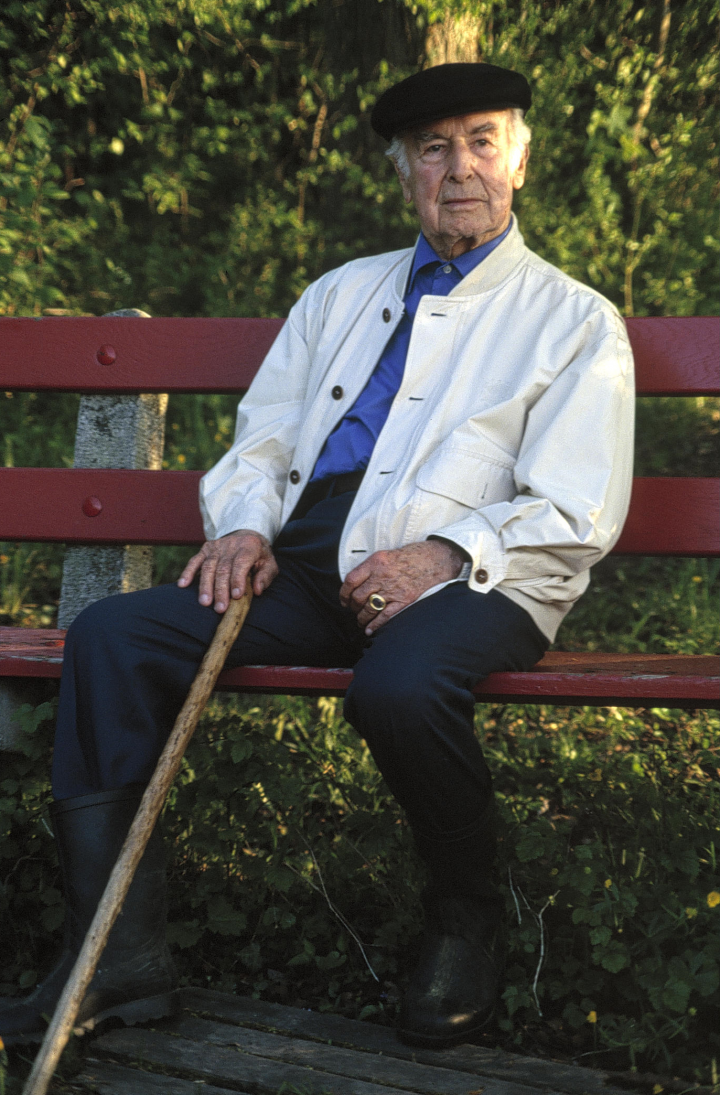
Renewed Life
The natural place to start is at the beginning: the birth of LSD. One of the best, if not the best, films on the subject is Hoffman’s Potion (2002) directed by Connie Littlfield and produced by the NFB. It explores the creation of the molecule LSD-25 by Swiss chemist Albert Hoffman (1906–2008) in 1943 and the events of the next 20 years. Devoid of idealistic rants or rambling conjecture, Hoffman’s Potion simply tells the story as it happened, through interviews with the people who were actually there. Crucially, we get to hear the story straight from the horse’s mouth: Hoffman himself. I have read around 30 books on the subject of drugs, and his, LSD: My Problem Child (1979), was among the very best. Devoid of the hyperbolic rants of Timothy Leary and the incomprehensible ramblings of John Lilly, Ho man’s book is unapologetically nerdy and profoundly articulate.
As Hoffman puts it Peter Mettler’s 2002 film Gambling, Gods and LSD, “I studied chemistry for philosophical reasons.” Spoiler alert: Mettler’s three-hour-long film contains only five minutes of footage that covers LSD. But the parallels Mettler draws between compulsive gamblers, evangelical Christians and the experience of a psychedelic drug is clear. “We go to a lot of trouble to see god,” Mettler narrates.
I love Albert Hoffman because he was not a hippie—he was an utter nerd. He accidentally produced LSD while creating drugs for migraine and post-partum hemorrhaging, got some on his fingers, and the rest is history.
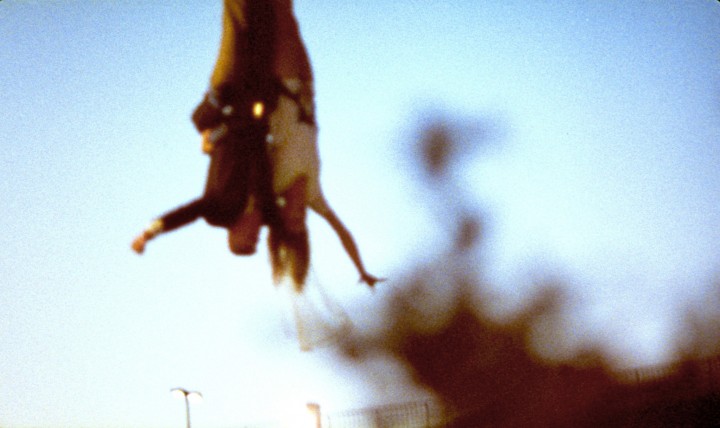
What are psychedelics, and what do they do? The meaning of the word, which is Greek for “mind manifesting,” tells us a great deal. “The possibility to have a psychedelic experience is inborn, because psychedelics are closely related to compounds in our brain,” Hoffman explained. LSD, mescaline, psilocybin and other psychedelics mimic serotonin, and thus can invade the receptor sites in our brains for naturally occurring chemicals in the body. In other words, you can think of them as lock-picking your cells: they burgle your brain.
What does a psychedelic experience feel like? “I realized how wonderful our world is—I felt newborn,” Hoffman recalls. Everything was infused with new meaning, everything vibrated with significance.
Hoffman never imagined that LSD could be used as a party drug. Rather, he thought it would only interest scientists, psychologists, writers, artists and philosophers, and could “be for psychiatry what the microscope was for biology and the telescope for astronomy.”
Psychiatrists shared Hoffman’s belief that the drug could be an unparalleled tool. Most notable: British psychiatrist Humphrey Osmond (1917–2004), also interviewed extensively in Hoffman’s Potion, which was released just two years before his death. He was still sharp and insightful.
Osmond is best known as the man who gave LSD to Aldous Huxley (the trip that inspired The Doors of Perception). But most are unaware that the first place Osmond worked with LSD on a large scale was in Saskatchewan, at the Souris Valley Mental Health Hospital. The institution was stacked to the rafters with miserable, shuffling, trembling and screaming patients. The staff felt helpless. “The hospitals were absolutely awful,” recalls Canadian psychiatrist Abram Hoffer.
Osmond thought LSD could be used in several ways. For a start, psychiatrists should take it themselves, so they could temporarily experience some of the symptoms of madness and develop greater empathy for their patients. But he also thought it could be used to treat mental ailments, primarily alcoholism. Because the hallucinations and sensations of an LSDtrip somewhat resemble “delirium tremens”—a symptom of severe alcohol withdrawal—it was thought the roller-coaster ride of a “bad trip” could scare alcoholics straight. However, patients instead tended to have beautiful experiences and felt they were able to reconnect with both themselves and the world.
The turnarounds were so profound, psychiatrists at Weyburn developed a large programme to combine LSD with therapeutic counseling. A retrospective study found that of 536 people in six studies in the 1950s, 59% given LSD drank less or cut down entirely, and just 38% of those given a placebo did the same.
So far, so good. But you can’t keep something like this secret forever.
Enter the intellectual rebels who wanted to take the drug out of the institutions and bring it to the people, most notably Timothy Leary, the Harvard psychologist and psychedelic enthusiast best known for the immortal quip “Turn on, tune in, drop out.” Concept: liberate this transformative drug and allow people to free themselves.
Great slogan, terrible result: naïve youngsters doled out the drug at parties, unprepared for what was going to happen, and countless traumatizing experiences ensued. Parents and authorities recoiled, and LSD became illegal worldwide.
But that certainly didn’t make it disappear.
“Leary thought his role was to popularize LSD, but in the end, it became impossible for us in research to use it, but easy for anyone on the street to find it,” as Osmond put it.
American Patriots
The horse had bolted. By then, too many people had fallen in love with LSD and wanted to spread the good word.Most early initiates enjoyed their first acid trip as part of medical studies or in military research programmes.
Allen Ginsberg, for example, took part in studies as a volunteer when the CIA was exploring using the drug as a mind-control agent, interrogation tool, truth serum and enemy destabilizer. An unintended consequence: many subjects became enamoured with the drug and determined to disseminate it. Ginsberg once remarked of the CIA, “Had they, by conscious plan or inadvertent Pandora’s box, let loose the whole LSD fad?”
Probably the most important person to be introduced (and turned on) to acid through a scientific study was Ken Kesey, whose experiences as a volunteer at the Menlo Park Veterans Hospital inspired not only his book One Flew Over the Cuckoo’s Nest, but also a far less conventional work of art: the bus Furthur, and The Merry Pranksters.
Essentially, Kesey and a gang of “free thinkers” got into a bus covered in day-glo paint and drove from California to New York City in the summer of 1964 on a quest to challenge the humdrum banality of American life with colourful antics, massive parties and LSD on tap. Their journey was immortalized in the book The Electric Kool-Aid Acid Test by Tom Wolfe.
The Pranksters captured all their adventures on film, a record of what they believed would be an historic journey that turned America upside down. You might think otherwise, but they claim they weren’t just out for a good time. “We saw ourselves as American patriots,” said Kesey.
Unfortunately, they “freaked” so much with the footage (such as by de-synching the image and the sound) that they were left with a messy clutter of clips that couldn’t be re-assembled. The footage had to wait for directors Alex Gibney and Alison Ellwood to use digital techniques to stitch everything together and produce Magic Trip (2011), which combines footage with interviews from the Pranksters themselves 40 years after the trip.
To see on film the very events Wolfe wrote about is striking if you are familiar with the book. Such as the time they all took acid, swam in an algae-covered pond, and Paula Sundsten (“Gretchen Fetchin”) emerged cooing “It SPARKLES!” as slime dripped over her fingers.
Whether teetotaler or psychedelic evangelist, Magic Trip is worth your time, as is the latest documentary to delve into the lives of the Johnny Appleseeds of LSD, The Sunshine Makers(2015).
Directed by Cosmo Feilding-Mellen and written by Connie Littlefield, this documents the exploits of Nick Sands, Tim Scully and The Brotherhood of Eternal Love, who created and disseminated a form of LSD known as “Orange Sunshine” after LSD had been outlawed in 1967. Incidentally, they also saw themselves as “American patriots,” using the same phrase as the Pranksters.
Scully, the chemist, received a 20-year sentence for his efforts; Sands, the strategist, 15. It can be truly said, they did it not for the money, but for the love. They sincerely believed they could halt the “degradation of mankind” and possibly “save the world.”
Their antics ranged from the grandiose (such as producing over 3.6 million hits of 300mg, 99% pure LSD at a lab in California), to the admirably idealistic (sending LSD to soldiers in Vietnam, hoping it could convince them to throw down their guns and bring an end to the war), to the outright astonishing (smuggling LSD into prison and converting Mafioso cellmates to using it).
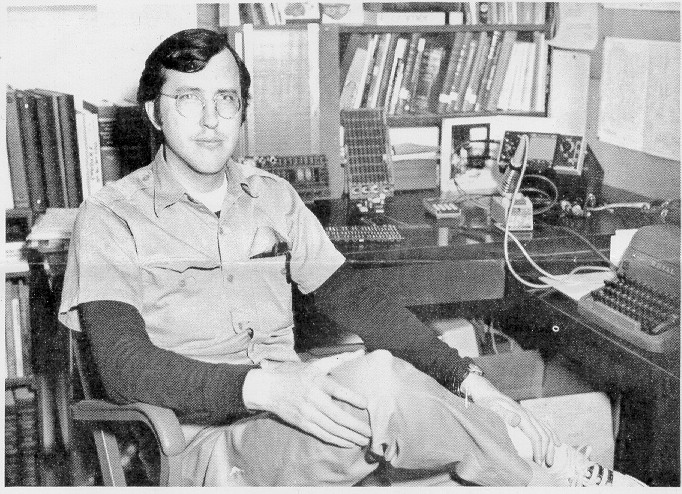
The Sunshine Makers combines a range of archival footage (including the team making LSD), interviews today with them and their assortment of lovers and, most impressively, interviews with the investigative cops who scoped them out and put them behind bars.
Cosmo could execute intimate interviews with Sands and Scully and access their aging footage because he had known the pair from childhood, as his mother—psychedelic researcher Amanda Feilding, Countess of Wemyss and March—was friends with both.
Speaking to Sands and Scully was effortless. Scoring interviews with the cops was far from easy.
“It was terribly hard to track them down, but once we did, they were totally up for it,” says Feilding-Mellen. “They were both very lovely—genuinely nice people. They just didn’t believe in how Scully and Sands thought society should be changed. They believed in law and order.”
An important thing to keep in mind, says Feilding-Mellen, is that Sands and Scully didn’t even want to sell the LSD at a cheap rate—they wanted to give it away for free. “They wanted to do this for ‘the good of humanity,’ but the nature of LSD being illegal meant their endeavours were dragged down into the criminal underworld. We can see the same thing today, where all drugs are categorized as drugs and there’s no distinction between heroin and LSD, which is ridiculous.”
Hollywood and the Diamond
Though they do not explicitly cover psychedelics, two outstanding documentaries from the past three years shine a light on the crucial way these drugs can affect one’s life:
No No: A Dockumentary (2014), an exploration of the life and times of baseball pitcher Dock Ellis (1945-2008), and Becoming Cary Grant (2017), which is exactly what it says on the tin – a revelation of what turned Archibald Leach (1904-1986) into the classic star of the silver screen.
If you crave a film that might – gently – celebrate the power of psychedelics outside the realm of hippy culture, these are the ones for you.
Tellingly, LSD played a profound role in the lives of these two stars of all-American entertainment. Which is counter-intuitive, as neither professional sport nor the silver screen are thought of as being populated by psychedelic enthusiasts. Stimulants and amphetamines are more common fare for pro athletes; booze and sedatives more common afflictions of actors. One would never expect a bombastic athlete or a dashing star to be into the kind of drug that alters you so profoundly for eight hours.
Dock, however, notoriously threw a “no hitter” – a rare feat for even the most accomplished of pitchers – while high on LSD. It wasn’t intentional, mind you. Dock – a raging party animal – woke up one Friday morning, still high on acid from a party that Wednesday (whatever happened on Thursday is anybody’s guess). Even though he accidentally hit a few batters, threw the ball into the stands a few times, and later said he could barely see any of the other players, he still managed a “no no.”
Funny, yes, but also insightful: psychedelics can aid cerebral tasks – from computer programming (psychedelics never went out of fashion in silicon valley), to musical composition and every manner of visual art. It’s not surprising that baseball – a precision sport, remember, not an endurance one – might be added to the list.
Not for your average pitcher, mind. Though the documentary reveals that 90% or more of the league’s players dabbled with the stimulant Dexamyl, Dock was fairly unrivaled in his consumption, admitting that the scariest day of his life was trying to pitch sober.
“It was easier to pitch with the LSD because I was so used to medicating myself,” he said. “That’s how I was dealing with the fear of failure.”
With interviews with Dock himself (who died in 2008), his teammates and family, historic footage, hilarious tales of locker-room antics, and a killer soundtrack (funk and soul from the early 70s), No No ticks as many boxes as a documentary can.
But more importantly, Dock’s brazen actions to protest discrimination against African American players are genuinely inspiring: Jackie Robinson himself credits him with changing the sport forever. Which is a poignant reminder: you can be an utter wreck-head but with a good heart you can still do much to change the world. Dock gave up on drugs and booze in 1980, but he never gave up the good fight: he spent much of the rest of his life as a counselor to drug addicts and prison convicts.
No No has a few tear-jerking moments – but no film in this list remotely compares to Becoming Cary Grant for heart-breaking revelations.
Most recall that Cary was born Archibald Leach in Bristol, England, in 1904, but not many knew that his mother was put in an asylum when he was 11 – when his father ditched his first family to start a new one – and Cary didn’t see his mother again until he was 31, by then a successful film star. He had always thought from youth that his mother had “rejected him,” but when he understood the truth, he set up a fund for her to be taken care of in London for the rest of her life, and visited as much as possible.
Feeling unwanted by his mother at 11 was heart-breaking enough, combined with his father’s truancy. Like many the child of trauma, he sought comfort in the bottle – and admitted later in life that he had subconsciously destroyed all his romantic relationships, and hurt “every woman he ever loved” in a strange desire to prevent being abandoned yet again. (It’s a common tale.)
What does he credit with healing his heart and saving his life? LSD. Lots of it – over 100 sessions, in the nascent field of “psychedelic therapy”. As noted, the original intention of Hoffman, Osmond and Huxley in the 1950s was not to disseminate LSD to the masses for parties, love-ins and baseball games, but for it to be used in the right time, with the right person, in the right way. Recreationally, sure – but primarily medicinally.
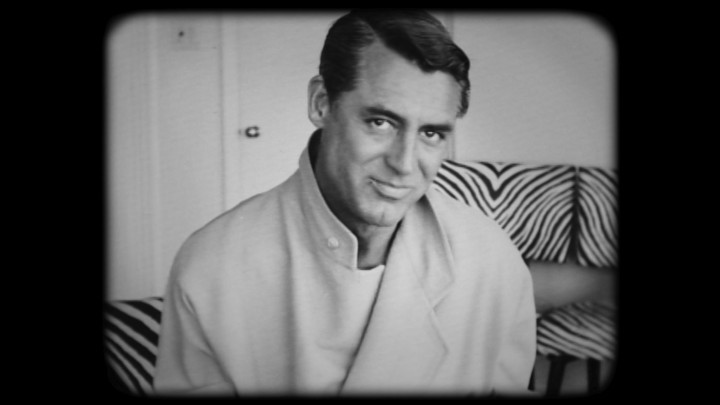
Grant underwent an enormous number of sessions with the psychedelic and a therapist, saying in the film that he had “never before given himself the space to look at Archie Leach.” What did he feel? In his own words, an “immeasurably beneficial cleansing.”
Like many who underwent therapy with LSD, he chose one word: “rebirth.”
The remaining portions of the documentary centre on his newfound ability to marry and be a loving father to his daughter, whose interviews speak volumes. He retired from the screen the year Jennifer Grant was born, 1966 – and he took fatherhood seriously. Footage of the aged and grey-haired Grant dancing with her in their Hills home is beyond touching. He may have died when she was only 20, but he gave her the security and stability that had been denied to him.
For a child left without parents to accomplish this feat speaks to the true potential for psychedelics: psychiatric medicine of an unparalleled form.
Psychedelic Renaissance
The story so far: In the 1950s, serious and exciting scientific work was being done. But when counterculture enthusiasm for hallucinogens got out of control, authorities clamped down not only on recreational use of LSD and its counterparts, but all research about the drug’s effects on humans.
However, over the past five years, scientists in North America and Europe have finally been able to overcome the red tape that has prevented serious scientists from working with psychedelics. Researchers have conducted a profusion of studies delving into the potential for psychedelics to be used as therapeutic tools, which was the original intention of Osmond and his contemporaries 70 years ago—not just LSD for alcoholism, but using magic mushrooms for alleviating anxiety in terminal cancer patients, MDMA for assisting with psychotherapy treatments for post-traumatic stress disorder (PTSD), and pretty much every psychedelic for severe forms of depression which have not responded to conventional drugs.
The name on everyone’s lips for the new wave of studies: “The Psychedelic Renaissance.”
“I really think there’s enough momentum now behind the science that these drugs will become legitimate pharmaceutical medications. I didn’t think that five years ago,” says Feilding-Mellen.
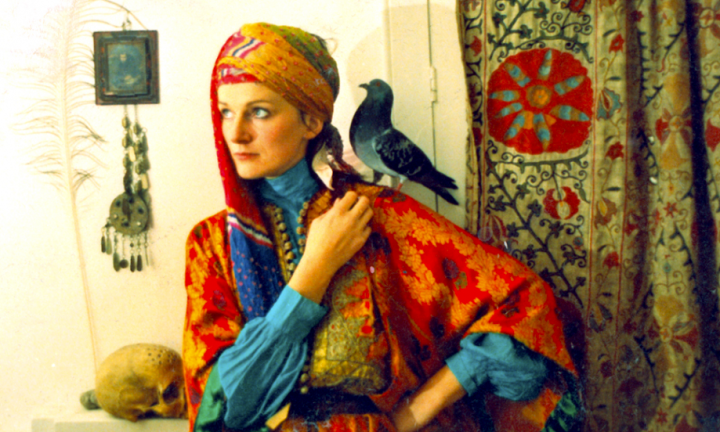
For the most comprehensive rundown on the state of the science, go to the 2013 documentary Neurons to Nirvana from Vancouver filmmaker Oliver Hockenhull. Consisting mostly of interviews with top scientists, plus a visit to Beckley Park, the stately Tudor home of Amanda Feilding where Cosmo grew up, this lm features pretty much every major researcher working today to tackle depression, trauma and anxiety with psychedelics. Among them are Charles Grob (who conducted the first study the FDA ever approved for using MDMA to treat PTSD), Rick Doblin of the Multidisciplinary Association for Psychedelic Studies (which has been working for 40 years to legitimize the science), Gabor Mate, Ralph Metzner, Stan Grof, Roland Griffiths—the list goes on. Plus an animated explanation of how these drugs actually work in the brain with Dave Nichols, poring over all the bits and pieces in the brain that come together to produce a psychedelic experience, from the serotonin receptors to the frontal cortex to the thalamus and all the other bits and bobs.
“I haven’t been involved with drugs on a personal level in 20 years, but I felt that this film was a needed examination of the renaissance in psychedelic culture and research,” says Hockenhull. “Our culture has a lot of problems in terms of its existential reality, and this is becoming more and more prominent in our everyday consciousness. Psychedelics can allow you to experience realities that are far beyond what you are used to experiencing. If properly prepared, you can gain untold riches.”
However, says Hockenhull, it’s important that today’s generation not get carried away or forget the missteps of the 1960s: psychedelic drugs in themselves do not create open hearts or open minds. One only needs to look at the followers of Charles Manson, who were being manipulated with LSD, or the yoga gurus who dosed people at ashrams with MDMA to control their experiences, or the “shamans” with enormous egos who are now exporting ayahuasca (an Amazonian psychedelic brew) around the world with grandiose claims about its power to change lives.
“These drugs in themselves will not solve any of your issues, but what they can do is allow you into a doorway that can shake the foundations of your ego and give you new perspectives. What you do with that is completely up to you,” he says.
The Second Chance
Indeed, psychedelics have never been trendier. Just today, a copy of The Economist came through my mailslot with the cover headline blaring, “Turn on, tune in, and drop by the office–does LSD make you creative?” A cursory look through YouTube will bring up thousands of low-budget and amateur documentaries on psychedelics.
Ayahuasca has become the trendy thing to do, and beware: if you have any interest in trying it, don’t bother watching Ayahuasca: Vine of the Soul (2010) or Aya: Awakenings (2013), as both are riddled with snore-inducing hippie hyperbole. Same goes for DMT: The Spirit Molecule (2010), DMT being the active chemical in ayahuasca that produces visions. When one DMT enthusiast breathlessly said “What if DMT is the key to speaking to life on other planets?” I had to turn the television off.
However, one film you can find on YouTube that is well worth a watch is Dirty Pictures(2010), a portrait of the unparalleled chemist Alexander Shulgin. There simply has never been another scientist like him: he not only resurrected MDMA from obscurity in 1971 (the drug had initially been created by Merck in 1912), he then went on to produce over 2,000 unique compounds, of which at least 200 had psychoactive effects. Shulgin made creating mind-bending chemicals his life’s work, and my favourite thing about him is that he tried every single drug on himself first. Not on animals or psychiatric patients or healthy volunteers. Himself. And the word for that is chivalry.
When Dow Chemical, his employer in the early 70s, tired of his druggy exploits, Shulgin worked at home in a garden shed, living off the profits of a biodegradable pesticide he had created and patented. Though the authorities didn’t approve of his work, there was nothing they could do, because every time he crafted a compound and gave it to himself, it was entirely legal since the drug was new. Shulgin, who died in 2014, was regarded as a menace by some and a hero by many.
As noted, there has never been a scientist like him, and Dirty Pictures is an unrivalled peek into the life of a very quirky but also deeply humane and decent human being. The devotion between him and his wife Anna, who was his partner in chemical exploration, is clear.
What comes up again and again throughout the film is that neither Shulgin nor his wife were interested in getting out of their heads. As Anna put it: “I don’t like drugs that make you too stoned, you don’t learn anything.”
“Learning” is a word that comes up again and again throughout the film. The Shulgins’ quest was educational and exploratory. As Shulgin says at the end of Dirty Pictures, “I never had a goal. I still don’t have a goal. What I’m looking for is to learn from the process. It’s like going through a hallway of doors, and then coming into another hallway of doors. It’s a marvellous and continuous process.”
For my part, I have spent much of my adult life witnessing, experiencing, considering and now scrutinizing drugs. I’ve watched friends and family battle with addiction, lost a few friends and had my own transformative experiences.
There are few things that can be said about mind-altering substances as a whole, but what I can say is this: every single drug—LSD, cocaine, heroin, speed, even nicotine and caffeine—is a double-edged sword. All can be used for good or ill. It depends on how you use them, and when.
Given that they are so powerful, and so quirky, it’s little wonder that psychedelics have such power to give both terrible and beautiful experiences. They might be dangerous, and they might be healing, but they are undoubtedly one thing: deserving of respect.
